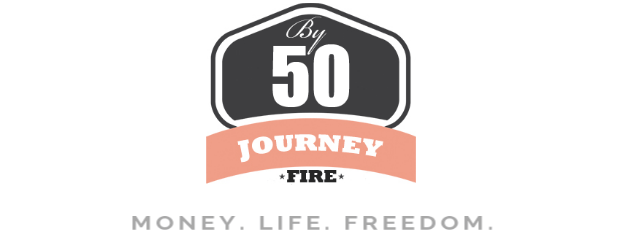9 Things You Should Do Before Start Investing
Over the years, I have been asked about how to invest in the stock market outside of work and where to start. Investing itself is quite simple. The complex step is getting your finances in order before you start investing. Yes, you heard it right. You should get your finances in order before you even consider investing outside of your typical employer-sponsored retirement plan. I’ll discuss 9 things you should do before start investing in the stock market.
Many people have a mindset that only rich people can invest. It’s not true at all. Everybody can invest as long as you’re financially fit. So today, I’m going to discuss things you should do before you want to put your money in the stock market. After reading this post, you should be able to take actionable steps to get your financial ducks in a row and you’ll be on your way to start investing your money in the stock market!
Disclaimer: by50journey.com is for informational and entertainment purposes only. I really appreciate you reading this post. However, my blog is intended to be a general resource only and is not intended to be nor does it constitute legal advice. I am not allowed and cannot give legal advice. Please do your own due diligence before making any financial decision. Any recommendations on this blog are based on personal, NOT professional, opinion only.
Before I discuss the importance of getting your finances in order, learning different types of investments is always helpful.
Different types of investments
 1. CDs
1. CDs
Certificates of Deposit or CD, in short, is an insured individual investment. It is typically offered by a bank or a credit union. In the U.S., most banks and credit unions are insured by Federal Deposit Insurance Corporation (FDIC). What it means is that the CD is guaranteed by FDIC up to a certain amount. A CD is a very low-risk investment. It pays a fixed interest rate for a specified amount of time. For example, A 2% 24-month CD will give a 2% interest rate on your balance when you deposit your money with a bank or a credit union for 24 months. Typically, the longer the term of CD, the higher the rate of return you’ll get.
Even though a CD is a very low-risk investment, you’ll get penalized if you withdraw your money before a set period of time. It’s a good option for a short-term investment. It can be a good option for short-term savings. Because CDs give a fixed interest rate and pay higher rates of interest than savings accounts or money market accounts.
2. Stocks
A stock is a share of ownership in a company. It gives the partial owner of a publically traded company to share in its profits. The shareholders receive funds in the form of dividends for as long as the shares are held and if the company pays dividends. Generally, stocks are traded on the stock exchanges. Stocks usually become available to new investors (people who are not part of the company) after a company decides to sell off parts of their company on the stock market, New York Stock Exchange (NYSE) or the National Association of Securities Dealers Automated Quotations (NASDAQ) for examples. This is commonly known as “going public”.
There are a different classification of stocks, such as growth stocks, value stock, growth & income stock. Generally speaking, putting your money in stocks is the most volatile form of investing.
3. Bonds
While a stock gives a shareholder part of the ownership of the company, a bond provides the shareholder with ownership of a loan in which the company promises to pay you back with interest. Bonds are normally far less volatile than investing in stock. The trick to invest in bonds is to hold them until its maturity. This way, you’ll get the full amount plus interest back. Bonds that are issued by the U.S. government tend to be the safest form of bonds. This is called a Treasury. One very special kind of bond is the United States Treasury Inflation-Protected Securities, known as TIPS. The nice thing about TIPS is that it’s guaranteed to keep pace with inflation as defined by the Consumer Price Index (CPI).
Two things to keep in mind when considering investing in bonds are tax implication and inflation rate. Interests on corporate bonds are fully taxed but interests on municipal bonds are exempt from the federal and may be exempted from a state level depending on a state you’re in. Treasury bonds interests are taxed at the federal level only. Bond prices usually move inversely with the direction of interest rate. If the interest rate goes up, bond prices are usually down. Generally, the rate of return of bonds is lower than that of stocks, funds, and other types of investments. It merely keeps pace with the inflation rate. However, investing in bonds provides a hedge against stock market volatility. This is how good asset allocation comes into play.
4. Mutual funds
A mutual fund is a pool of stocks and bonds that aims to achieve specific goals or results. Generally, a mutual fund is several stocks that are grouped together based on their similar fund objectives hence the name “Mutual fund”. These funds are actively managed by a mutual fund manager to bring as many performing stocks as possible. So an investor (you) pays a fee for managing the funds. Some mutual funds can be aggressive and risky while others can be conservative depending on what types of investments (combinations and ratios of stocks and/or bonds) the mutual fund is investing in.
5. Index funds
Another type of stock fund is the index fund. An index fund was created by John Bogle, the founder of Vanguard, in 1976. It is also a pool of stocks that bases its strategy on the performance of indexes like the S&P 500, the Dow Jones, or the Russell 2000. Basically, it is a group of stocks that are trying to replicate the performance of an index. Since it is passively managed by an index fund manager, an investor (you) pays a minimal fee.
The well known Vanguard index funds are the Vanguard 500 (VFINX) and the Vanguard Wellington (VWELX; investor share and VWENX; admiral share). For example, the VFINX tracks the S&P 500 benchmark and it promised to keep up with the broad index of stocks and to replicate the return of the S&P 500 benchmark.
6. ETFs
Exchange Traded Funds or ETFs, in short, is a pool of securities or funds that are traded on stock exchanges throughout the day much like stocks. It’s basically marketable security that tracks an index, a commodity, bonds just like an index fund. In other words, it’s a form of an index fund that provides investors with a benchmark return but offers an ability to trade like a stock on a stock exchange throughout the day.
Not all ETFs are designed to replicate index funds though, so be careful and do your own due diligence before investing.
7. Real Estate
Another type of popular investment is real estate (houses, apartments, buildings, and commercial properties). The most commonly known real estate investment is a rental house. You buy a house and rent it out to a tenant. Or you can buy a house, fix it up, and sell at a higher price for profit (commonly called house flipping). It takes more initial money to invest (cost to buy a rental vs small initial investment money to buy a stock/a fund). However, real estate provides diversification to investors. Real estate is somewhat passive. It takes some work unlike investing in funds or stocks.
There’s another form of real estate investment that is more passive than the traditional real estate is Real Estate Investment Trusts (REITs). A REIT is a company that buys and owns real estate properties. They allow investors to buy shares of the real estate so they can get funding to buy more properties and in turn, distribute profit to their investors based on shareholdings.
8. Commodities
Commodities like precious metal (gold and silver, for example) to consumer commodities (oil and natural gas, for example) are other types of investment. I don’t have direct experience and I don’t know much about this type of investment. So I’m suggesting you study more on this type of investment if you’re interested. I think investment in gold is complex, as the price of it’s not determined by any means. The only thing I noticed about gold is that in the long run, the price is always up. However, it takes decades to achieve that. My great grandma always told me to buy gold (and keep it) whenever I had the money. She said gold was more valuable than anything else and that included money when there was war or a global crisis. The money will lose value but gold won’t because it’s a finite resource.
Note: there’s no one size fits all when it comes to investing. There’s no one correct way to invest your money. Everybody is different, has different goals and different life situations. As long as you are committed to continuing learning about saving money and investing, you’ll be on your way to wealth. The most important thing about investing is that do whatever makes you feel comfortable and don’t invest in anything that you don’t understand.
Retirement plans
Before I talk about things you should do before start investing, I wanted to mention retirement plans. A retirement plan is an investment plan. There are different types of a retirement plan that offer different tax benefits and help you achieve your financial goals in your retirement years.
Remember, make sure you’re on track to meet your retirement goals before start investing outside of work or investing beyond your retirement plan.
 1. 401(k)
1. 401(k)
A 401(k) is probably the most common employer-sponsored retirement plan. If your employer offers one and you qualify, you can participate (and you should!). Your money is deducted from your paycheck pre-taxed and invested in different types of investments (depending on options you choose). Most employers match your contribution up to a certain percentage. So if you don’t participate, you’re leaving free money on the table. There’s a contribution limit as to how much you can contribute annually. It varies year after year. In 2018, IRS allows up to $18,500 and a $6,000 catch-up amount for those who are 50 years old and older.
The amount you contribute to your 401(k) reduces your taxable income hence you pay less tax for that year. However, when it’s time to make a distribution (take money out), you’ll get taxed. So basically, 401(k) withdrawals are taxed like an ordinary income. If you withdraw it before the age of 59 1/2, you’ll get penalized by paying an additional 10% tax penalty.
2. 457
The 457 plans are similar to 401(k) plans. While 401(k) plans are offered to workers in for-profit companies or organizations, 457 plans are offered to state and local government workers (nonprofit organizations) such as police officers and firefighters. There’s also a contribution limit as to how much you can contribute annually like 401(k) plans. While most employers who offer 401(k) plans match your contribution, employers who offer 457 plans rarely offer a matching contribution. However, employees who are offered a 457 plan usually get a pension. A 457 plan is more like a supplemental retirement plan than a primary one.
The amount you contribute to your 457 reduces your taxable income hence you pay less tax for that year. Just like 401(k) plans, when it’s time to make a distribution, you’ll get taxed like ordinary income. If you withdraw it before the age of 59 1/2, you’ll get penalized by paying an additional 10% tax penalty.
3. 403(b)
The 403(b) plans are also similar to 401(k) plans. It’s a tax-advantaged employer-sponsored retirement plan for workers in nonprofit companies, school districts, religious groups, and governmental organizations like teachers, hospital workers, and self-employed ministers.
The contribution limit and tax implications are similar to 401(k) plans. The only difference I can think of is that the 403(b) administrative expenses are lower than that of 401(k).
4. TSP
Here is what opm.gov defines TSP. The Thrift Savings Plan (TSP) is a tax-deferred retirement saving and investment plan that offers Federal employees the same type of savings and tax benefits that many private corporations offer their employees under 401(k) plans.
So basically, a TSP plan is a 401(k) plan for federal employees. They just call it differently.
5. Simple IRA
Investopia defines a Simple IRA as a retirement plan that may be established by employers, including self-employed individuals (sole proprietorships and partnerships), for the benefit of their employees. The acronym stands for “Savings Incentive Match Plan for Employees.” And IRA is, of course, “Individual Retirement Account.”
If you’re interested to learn more about Simple IRA, here is a Simple IRA page on IRS website.
6. IRA
Again, IRA stands for Individual Retirement Account. It’s NOT an employer-sponsored retirement plan like other plans I have mentioned above. This is an individual retirement account that you operate and manage at a financial institution yourself. It has nothing to do with your employer. Your money is contributed and grows on a pre-tax basis. This type of retirement plan can be supplemental to your employer-sponsored retirement plan.
The contribution limit varies year after year. In 2018, you can contribute up to $5,500 annually. You can contribute an additional of $5,500 per year on top of your employer-sponsored retirement plan. Bear in mind that, you’ll get taxed when you withdraw. The nice thing about an IRA is the IRS does allow individuals to withdraw before the age of 59 1/2 if you meet a certain specification. See IRS websites, if you’d like to learn more.
7. Roth IRA
The Roth IRA plans are a type of IRA. While IRA plans offer benefits on a pre-tax basis, Roth IRA plans are post-tax contribution. In another word, your contribution toward your Roth IRA doesn’t offer a tax break or your money is contributed on an after-tax basis. However, your money grows tax-free. The IRS does allow individuals to withdraw before the age of 59 1/2 if you meet a certain specification. See IRS website, if you’d like to learn more. It’s a “Publication 590-B” under publications, in “Roth IRAs” section”. Scroll almost all the way down to “Early distributions”.
However, not everybody can contribute to Roth IRA. There’s an income limit based on your adjusted gross income (AGIs). Here are the amounts of Roth IRA contributions that you can make for 2018. Again, you can make an additional contribution to Roth IRA on top of your employer-sponsored retirement plan. Since Roth IRA grows tax-free, it can be a good retirement vehicle to diversify your retirement portfolio from a tax standpoint.
Here are 9 things you should do before start investing
1. Set your financial goals
Ask yourself, why do you want to invest? If your answer is you want to be rich, you need to come up with a more specific goal. It’s because different types of investments provide different goals and tax benefits. If you are planning to use the money from your investment for a down payment on a house or to pay for college for your kids 10 years down the road, your investment choices will be different than if you are planning to use it for your retirement 30 years from now.
If you’re planning on using it for early retirement like us, you’ll want to invest your money outside of an employer-sponsored retirement plan. So you’ll have the flexibility and can withdraw the money before the age of 59 1/2 without tax implication/burden.
Sit down with your spouse (if you have one) and discuss each other’s goals. Come up with common goals and write it down. Draft your investing plan and hold each other accountable. It’s easier said than done. You need to implement it and keep at it. Eventually, it’ll become easy as it goes.
2. Know where your finances stand
Ask yourself, are you really ready to invest? Let me ask you this, are you financially fit? It doesn’t make sense to invest money while you have consumer debt or you’re living paycheck to paycheck. Since you’re reading this, I think you’re already on your way to be better financially.
You don’t want to take money out from your investment just to make end meets. It’s important to let it grow for a period of time. What’s the point if you invest your money and later find yourself needing the money and ending up paying taxes on your investment. Don’t spread yourself too thin. You get the idea.
Good financial health begins with tracking your finances and budgeting. This means knowing how much you make, how much & where you’re spending. There are ways to track your expenses you’re spending. I use this free tool to track our income and expenses. It helped pinpoint our financial weaknesses. Less than a year later, we were able to open a brokerage account and finally made our first investment outside of work. Thanks to this tool we now have investment income – I think that was pretty awesome.
3. Pay off high-interest rate debt
The next thing to do is to pay off high-interest rate debt. I’m talking about credit card debt, personal loan, or even a car loan. If your student loan interest rate is higher than 6% and the amount of the loan is manageable, you might as well pay it off before you start investing. You know, paying down debt is a form of investing too. If you owe a credit card with a 19% interest rate when you put your money toward it you essentially earning 19% guaranteed return.
Get rid of your high-interest rate debt is not enough if you regularly use your credit card(s). You need to establish a habit of paying off your credit card balance in full every month for a period of time before considering investing. This is to ensure that you have money for covering your wants & needs and to avoid credit card interest charges.
You never want to spend more on credit cards than you can pay back in a month.
4. Build and maintain an emergency fund
The idea is to tap the emergency fund, not your investment in case of an emergency. You should build and maintain an emergency fund of 6 months worth of living expenses in savings before start investing. If you own a home, have kids, and are in an insecure job, you should have a year’s worth of living expenses in savings saved up.
Look at it this way, if you need to sell your investment just to make end meets, you also need to pay taxes on any gains. Even worse, if you need to take out your pre-tax retirement money before your eligibility like your 401(k), it can cost you more money (you’re losing money). Not only the money is taxed at an ordinary income but also penalized with a 10% early withdrawal penalty.
Having to sell your investments at a loss to cover an unexpected event because you don’t have an emergency fund is not wise so get your emergency fund in place by putting money in your saving account. It is easier if you could automate it. Set up a recurring transfer from your checking (where your paychecks come in) to your saving account and forget it. It’s more achievable than making a monthly deposit to your saving account. Because you don’t see the money in the first place, you’ll learn to adjust your spending.
5. Establish a regular saving habit
How could you have the money to invest if you spend it all? You can’t invest unless you save, plain and simple. Easier said than done though. You can’t save if you’re not disciplined. If you want to build wealth, you must be disciplined. You also want to invest regularly (rather than put a big chunk of money one time and leave it). Consider dollar cost averaging. You can protect yourself from the risk of market volatility by regularly putting money to your investment over a long period of time.
Get your mindset right about spending and saving. Also, it’s good to remember to balance your life now and later. At the end of the day, you want a good balance between your present and your future.
Here is a trick that works for us. Many people I know let their spending determine how much money they can save each month. You should think of it opposite way if you want to build wealth. Your savings should dictate your spending. You spend whatever is left after savings. Pay yourself first is key.
6. Max out your employer-sponsored retirement plan or contribute enough to get a full match
Before putting your money directly toward the stock market, it’s a good idea to ask yourself if you contribute enough to your employer-sponsored retirement plan. Most employers will match some or all of your contributions. If your employer offers a retirement plan with a matching contribution and you don’t participate or don’t contribute enough to get your employer’s maximum match, you are leaving “free money” on the table. It doesn’t make financial sense if you are investing your money in the stock market but you don’t participate in your own retirement plan at work.
You should consider maxing out your contribution to your retirement plan at work or at least contribute enough to get a full match before start investing outside of work.
7. Know your risk tolerance
Investing is emotional. How would you react if the stock market is crashing? Are you going to keep your money invested or want to sell to avoid further loss? Are you willing to take higher risk to potentially earn a higher rate of return or play it safe by investing in a more conservative, less volatile type of investment? Those are questions to ask yourself so you can know what your risk tolerance is. Vanguard has a nice tool to measure your risk tolerance. It’s free. You can go here if you’re interested. All investments involve some degree of risk. Keep in mind that past results don’t guarantee a future return.
8. Consider or have a college savings fund for your kids
If you have kids, are you planning to help your children with their college funds? If you do, you should have a college savings fund in place before start investing in the stock market. A college savings fund is a type of investment actually. The student loan crisis is a real problem in the U.S. these days. Set some money aside if you want to help your kids with college savings. You can get some tax breaks at the state level if your state offers one. It’s wise to have a college savings fund for your kids. Especially with the new tax law that you can use your college savings funds toward non-higher education like a private or a religious school’s tuitions.
You can check with your financial institution if they offer a college savings plan. If your state offers college savings plans, you should check them out first since you could get a tax break. Remember that you don’t have to open an account with your home state, you can open any state college savings account regardless of what state you’re in.
9. Determine if you need a financial advisor
A good financial advisor can help you meet your financial goals. On the flip side, a not-so-good financial advisor will live off your money. A good financial advisor should listen, understand your goals and should be able to offer you several investment options. If your financial advisor insists to offer you one particular investment option without a good explanation, you should find a new one or be your own advisor. It indicates that he or she is trying to get you to invest in that product because of the high commission. Remember that you pay him or her to work in your best interest. They get paid based on your amount of investment and on commission.
“How do you know for sure that your financial advisor
cares about your money as much as you do?”
Here is my take. Nobody cares about your money than you do. If you don’t know what you’re doing, you should not even invest at all. Learn to invest. You should clearly understand the risks associated with each investment type before you commit to it.

A good rule of thumb is you should invest in your retirement plan(s) first whether it’s an employer-sponsored plan or a self-plan or both before consider putting your money toward the stock market. I’ll discuss more investing in the next posts. Remember that investing is simple. The hard part is to get your finances in order. Implement the strategies I discuss here. Happy investing!
Have you been wanting to invest?
Are you currently investing your money outside of work?
If you do, any experience or tips you could share?













2 Comments
Leave your reply.